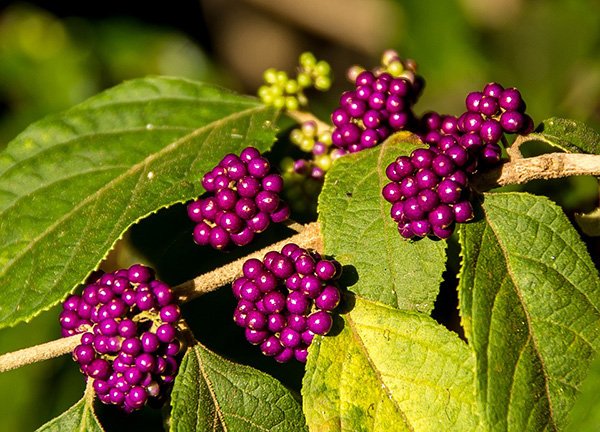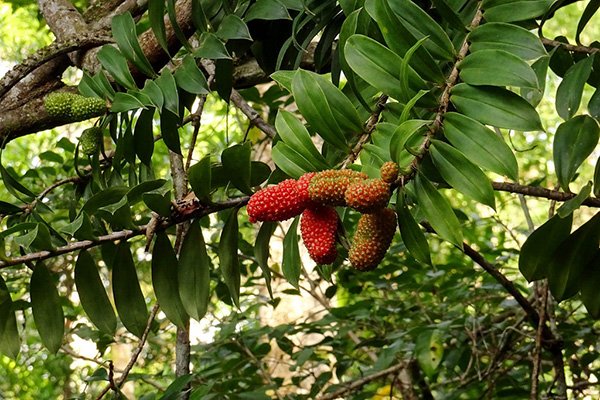Fruits of the forest

FOR MILLENNIA the rainforest has offered a grocery store of fresh, seasonal produce for Aboriginal people and native animals.
More than 2000 of Australia’s rainforest plant species bear fruit, although many require special preparation to remove toxins before they’re suitable as tucker. For instance, the nutritious brown candle nut of north Queensland is toxic before roast-ing.
Trees, shrubs and climbers abound with fruit of every colour, shape and size imaginable; from the 22 cm banana-shaped scrub breadfruit of Cape York, to the pea-sized rolypoly satinash, which looks something like a miniature purple pumpkin. Rainforest fruits can be extremely poisonous and difficult to identify, so it’s best to enjoy these bountiful beauties with your eyes, not your tastebuds.
Beach Barringtonia
Barringtonia asiatica
This buoyant, toxic fruit drifts on the ocean between Townsville and Cape York. Growing up to 30 m tall, and fruiting from Oct—May, the beach barringtonia clings to coastal areas.
Diameter: 8-10 cm

(Image Credit: Wikimedia)
Red bush apple
Syzygium suborbiculare
The hardy native apple, a sharp-tasting bush snack, bears fruit year-round throughout pockets of lowland rainforest. Aboriginals squeezed pulp from the blood-red fruit into their ears to relieve earache.
Diameter: 7-9 cm

(Image Credit: Flickr.Oriolus84)
Blue quandong
Elaecarpus grandis
Early European settlers stewed the tree’s acidic fruit to produce jam and tarts. Musky-rat kangaroos distribute quandong seeds by munching on fruit that has dropped to the forest floor.
Diameter: 1-3 cm

(Image Credit: Wikimedia/Merrjack)
Velvet leaf
Callicarpa pedunculata
Velvet leaf is found in low and upland rainforests and is popular with birds but inedible for humans. Its small berries ripen from white to metallic purple in summer and autumn.
Diameter: 2-4 mm

(Image Credit: Pixabay/Sandid)
Climbing pandan
Freycinetia excelsa
Pollinated by flying-foxes, the fruit of this native root climber is edible but causes burning to the back of the throat. It sprouts between January and April.
Length: 3-6 cm

(Image Credit: Flickr/Tatters)
READ MORE:




